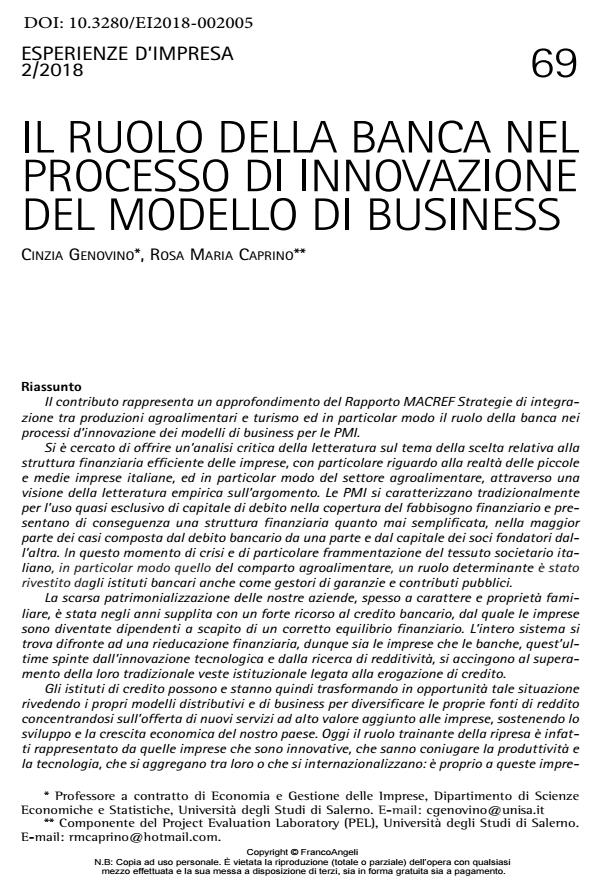Il ruolo della banca nel processo di innovazione del modello di business
Journal title ESPERIENZE D'IMPRESA
Author/s Cinzia Genovino, Rosa Maria Caprino
Publishing Year 2021 Issue 2018/2
Language Italian Pages 37 P. 69-105 File size 447 KB
DOI 10.3280/EI2018-002005
DOI is like a bar code for intellectual property: to have more infomation
click here
Below, you can see the article first page
If you want to buy this article in PDF format, you can do it, following the instructions to buy download credits

FrancoAngeli is member of Publishers International Linking Association, Inc (PILA), a not-for-profit association which run the CrossRef service enabling links to and from online scholarly content.
This paper represents an in-depth analysis of the MACREF Report Integration strategies between agri-food production and tourism and in particular the role of the bank in the innovation processes of business models for SMEs. It is an attempt to offer a critical analysis of the literature on the theme of the choice related to the efficient financial structure of companies, with particular regard to the reality of Italian small and medium-sized enterprises, and in particular in the agri-food sector, through a vision of the empirical literature on the subject. SMEs have traditionally been characterized by high level of debt capital to cover their financial needs, and as a result they have a very simplified financial structure, in most cases consisting of bank debt on one hand and capital of founding members on the other. In this moment of crisis and particular fragmentation of the Italian corporate fabric, especially in the agri-food sector, a decisive role is played by banking institutions also as managers of guarantees and public contributions. Over the years low capitalization of our companies, often family-owned, has been compensated by a strong use of bank loans, so companies become dependent at the expense of a proper financial balance. The whole system is facing a financial re-education. Therefore both companies and banks, the latter driven by technological innovation and profit-seeking, are going to overcome their traditional institutional role linked to the provision of loans. Credit institutions can turn, and they are turning, this situation into opportunities by reviewing their distribution and business models to diversify their sources of income by focusing on offering new high value-added services to businesses, supporting our country's development and economic growth. Today, the driving force behind the recovery is represented by innovative companies, able to know how to combine productivity and technology, able to join together or internationalize. It is precisely to these companies that the banking system must look and offer them support not only in financial terms but also in terms of experience, knowledge, expertise and advice.
Keywords: Capital structure, agri-food businesses, SMEs.
Cinzia Genovino, Rosa Maria Caprino, Il ruolo della banca nel processo di innovazione del modello di business in "ESPERIENZE D'IMPRESA" 2/2018, pp 69-105, DOI: 10.3280/EI2018-002005